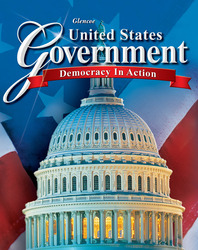United States Government: Democracy in ActionChapter 9:
Presidential LeadershipStudent Web Activity Lesson PlansIntroduction
Executive agreements are pacts between the president and the head of a foreign government. They have the same legal status as treaties, but they do not require Senate approval. The president utilizes executive agreements as part of the role as chief diplomat. In this activity, students will learn more about this controversial power of the president. Lesson Description
Students will read a document about the history and use of executive agreements. They will answer four questions about this presidential power, and then write a persuasive essay for or against the authority of the president to use executive agreements. Instructional Objectives
- Learners will comprehend the pros and cons of executive agreements.
- Learners will write a persuasive essay concerning the use of executive agreements.
|
Student Web Activity Answers
- Presidents have relied on the use of executive agreements instead of treaties since World War II.
- An international agreement may take the form of a treaty, a sole executive agreement, or a legislative-executive agreement.
- The document sites the destroyer-base deal (Lend-Lease Agreement) with Great Britain in 1940, the Yalta and Potsdam agreements of 1945, the Vietnam peace agreement of 1973, and the Sinai agreements of 1975.
- Senator John Bricker proposed a constitutional amendment to limit the use and effects of executive agreements in 1951. President Dwight D. Eisenhower opposed the amendment on grounds that it would hamstring the presidency in the conduct of foreign policy.
- Students' essays will vary. They should provide an opinion statement, supported by facts and reasons for their opinion. Remind students to use persuasive language in their essays and to provide responses to counterarguments.
|
 | 




